Which animals can be dangerous in the Red Sea?
If you just observe the coral reef it will not harm you. Very few species are aggressive towards divers. On this page you will find an overview of the dangerous creatures that you can meet while diving or snorkeling in Egyptian part of the Red Sea.
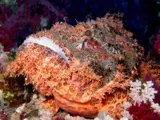
Scorpionfish and Stonefish
These fish have sharp spines with a poison gland on their backs. They serve as a means of defense. If the fish feels threatened, they straighten the spines. In addition, these fish are dangerous because they are hard to distinguish at first glance from the surrounding reef, where they lurk unnoticed for their prey - small crustaceans and fish. A stonefish is often indistinguishable from a stone. That's why you have to be careful not to accidentally step on such a fish and better not touch the reef at all when diving. An interesting species of scorpionfish is called Red Sea Walkman - Inimikus filamentosus. It walks along the sandy bottom using three rays of front fins that look like claws. As a warning, it spreads the colorful pectoral and tail fins, resembling butterfly wings. By the way, this fish is also very poisonous.
As first aid in case of injury, it is recommended to immerse the affected area for several hours in hot water (60°-70°), which denatures the protein component of the poison. And give painkillers, this is a very painful injury. Fatal cases are also known! An inadequate response to pain underwater can be a problem for divers.
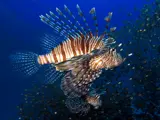
Lionfish
Lionfish also belong to the group of scorpionfish. Their appearance and way of life is somewhat different. What they have in common is a dorsal fin equipped with poisonous spines. During the day, lionfish can most often be seen "sitting" up side down under various overhangs in the cliff. At night, they hunt for their prey, which in the case of fire lionfish are most often small fish and small crustaceans. These hunters often also inhabit shipwrecks.
As a first aid, it is recommended to immerse the affected area in hot water, which denatures the protein component of the poison. And give painkillers, this is a very painful injury.
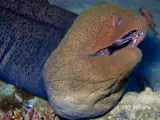
Muray Eels
Moray eels can inspire respect in us due to their serpentine body shape, their skin is bare without scales and covered with a layer of mucus. Morays do not have pectoral fins, the dorsal and anal fins are connected and form a border along the length of the entire body. The giant moray, which is abundant in the Red Sea, grows up to 3 meters in length. Moray eels do not attack humans per se, nor do they have poisonous teeth or spines. However, if you irritate the moray eel, a painful bite with sharp backward curved teeth may occur. Moray eels live by hunting smaller fish, they go hunting mainly at night, during the day it is possible to see them especially sitting in the holes of the reef.

Blue Spotted Stingray and other rays
Stingrays belong to fish, they have cartilage instead of bones, which gives their body flexibility. In the Red Sea, there is a widespread blue-spotted stingray, which has two poisonous spines on its tail for defense. It feeds on small crustaceans and fish, which it digs up from the sandy bottom. In the winter months, even larger species of rays, such as the feathertail stingray, command respect due to their size. It also has poisonous spines on its massive tail. Sometimes it is possible to meet a leopard stingray. And there is also so called torpedo panthera which uses an electric shock to stun its prey - small crustaceans, molluscs and fish.
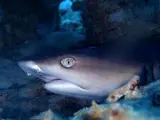
Sharks
Like stingrays, we classify sharks as fish. Sharks can be seen most often around reefs in the open sea, where divers can reach on safari boats. It is usually possible to see whitetip oceanic shark, tiger stark and hammerhead shark. Some species hunt turtles and sick dolphins at the surface, these can be considered potentially dangerous. Smaller sharks like whitetip reef shark are usually shy. Shark attacks are not very common in Egyptian part of the Red Sea. We have not received any information about a scuba diver being attacked by a shark around Hurghada. But we do not advise snorkeling with sharks.

Trigger Fish
These fish are among the most aggressive in the Red Sea, especially in the months of July to September, when their breeding season begins. The trigger fish its funnel-shaped nest in the sandy bottom and defends the entire water column above it to the surface. Therefore, if you enter its territory, it is recommended to flee in a horizontal direction and protect yourself with your fins. Cases where a fish bites into a diver's fin are relatively common. The titan triggerfish, which can be considered the most aggressive fish of the Red Sea, grows up to 75 cm in size.

Sea Urchins
There is a risk of injury from a sea urchin, especially when entering the water. Sea urchins live among stones, and the most common injury is the pricking of a black sea urchin's spines into a bare foot. This is a very painful injury, the spines of the sea urchin are very fragile, so it is almost impossible to pull them out of the wound with your own strength. It will take about 3 days for the pain to go away and for the body to absorb the remaining parts of the spines. Immersion in hot water is recommended as first aid. Next, carefully remove the visible spines with tweezers, but be careful, they are fragile and usually part of them remains in the wound. Apply antiseptic solutions or over-the-counter antibiotic ointments. There is a risk of subsequent infection, we recommend that you see a doctor.

Cone Shells
The greatest danger is represented by cone shells!!! It is a snail living in a nice conical shell. Most of the time, it lies buried in the sand and sniffs out only the undulating siphon, which the fish can easily mistake for a worm. To keep the fish at a sufficient distance from its impressive shell, the snail hits it with its poisonous barb, which is connected to its body by a long thread. Venom of some species of cone shells is a highly effective mixture of nerve poisons - conotoxin, which also contains substances that accelerate the activity of the heart, which ensures a quick and fatal effect. For these reasons too, we warn you against collecting shells of marine animals. This snail is nocturnal animal.

Fire Coral
Corals themselves pose another danger, which can cause very painful burns that take many days to heal. Also, please do not break corals as souvenirs and do not snorkel over too shallow coral reefs in Egypt. As a first aid, we recommend treating with a weak acid (e.g. vinegar, lemon), scrubbing for a long time. It is necessary to keep the wound clean and dry, and if necessary, give painkillers.
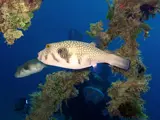
Puffer Fish and other dangerous fish and animals
Puffer fish, Porcupine fish and soles - these fish produce toxins to defend themselves, there is a risk of poisoning if ingested during unprofessional preparation as food (fugu fish). Catfish – This eel has poisonous spines in its dorsal and pectoral fins. The sting is extremely painful. Immersion in hot water is recommended. It is often possible to see a dense flock of young fish looking for food in the sand. Crown of Thorns starfish – is covered in poisonous spines. Cortisone ointment can be used as first aid for skin irritation. A visit to the doctor is necessary to remove the thorns from the wound.
You can check also information on DAN - Divers Alert Network.

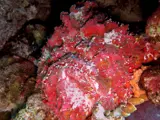
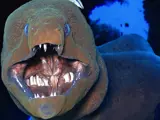

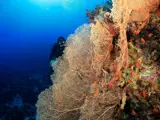
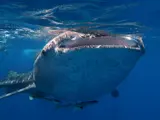


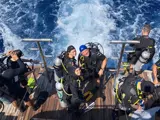
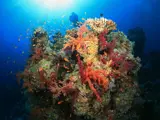
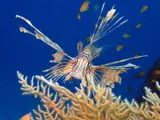

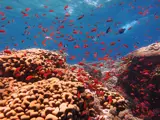
About the author
Pavla